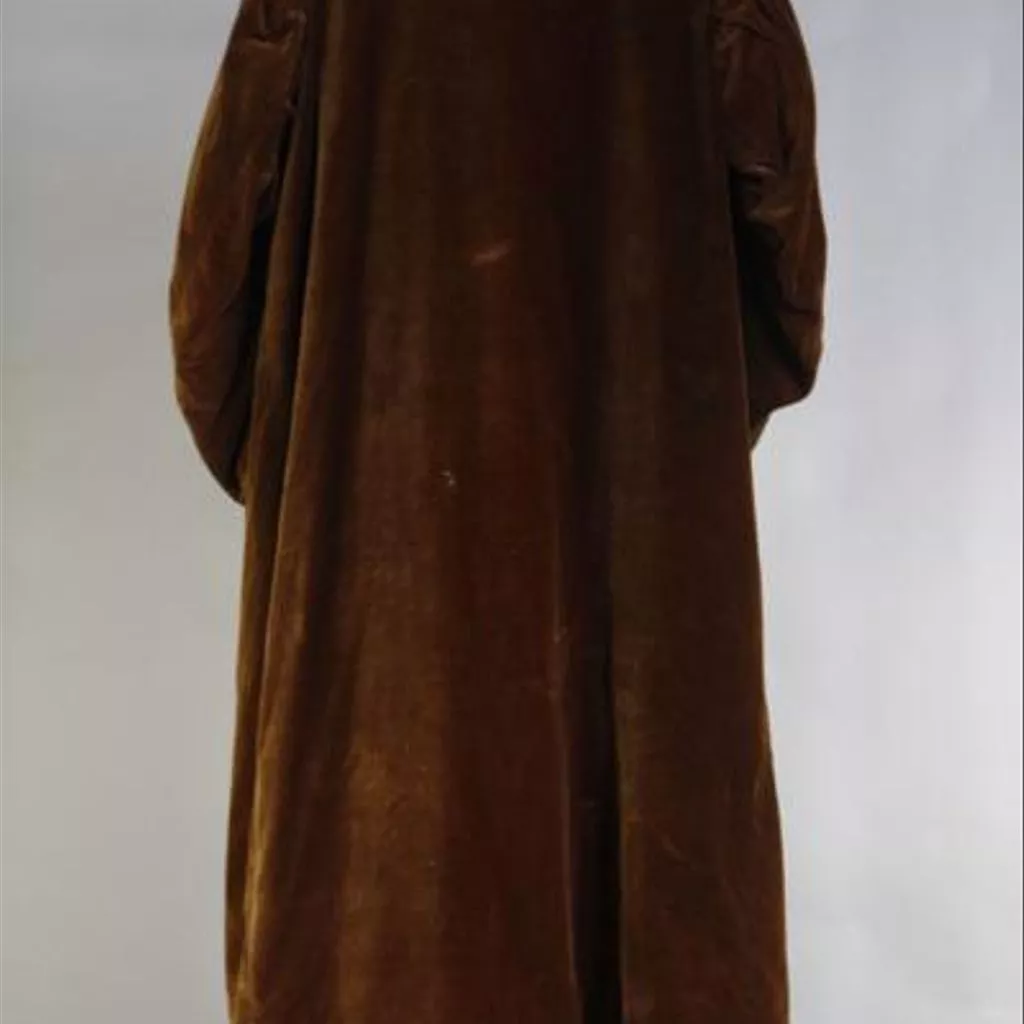Description
Calf-length open coat of brown velvet, loose fitting, trimmed and partly lined with leopard skin and fastening at the neck with a single hook and eye. Lined with brown silk. Cuffs fastened with three nut-shaped buttons like those of S.2773-2010.
Henry Irving (1838-1905) wore this costume in the title role of Werner by Lord Byron (1788 -1824). The period costumes for this production were researched and designed by the Royal Academician John Seymour Lucas (1849-1923). Both the quality of work and materials involved suggest that Irving intended playing the role many times. In fact he only performed it once, in 1887, as a benefit performance for John Westland Marston (1819- 1890), an elderly playwright and friend of Irving's who had fallen on hard times. Whilst Irving's playing of Werner was praised, the play was criticised for being gloomy, morbid and lacking in interest.
Irving became a professional actor in 1856, and learned his trade in regional theatres until 1866, when he came to London. He joined the Lyceum Theatre company under the management of H. L. Bateman in 1871, winning great acclaim that year for his psychologically developed characterisation of the guilt-ridden inn-keeper Mathias in Leopold Lewis's melodrama The Bells. He took on the responsibilities of 'actor-manager' in 1878 when he assumed the management of the Lyceum, and remained there until 1902, enjoying star status with his leading lady Ellen Terry (1847-1928). Irving produced a diverse range of old and new plays at the Lyceum, including Shakespeare, historical drama, and literary adaptations. His tireless work to elevate the status of the theatrical profession was rewarded in 1895 when he became the first actor ever to receive a knighthood for services to the Theatre.
Irving specialised in spectacularly staged productions with large casts of performers. He commissioned designers and composers to create appropriate scenery, costume and incidental music, played by a full orchestra. Although electric lighting was available from the 1880s, Irving preferred the softer effects of gas, with lime light to focus attention at key points in the play. Irving toured complete productions outside London, taking the full company, scenery and costumes throughout the United Kingdom and across the United States and Canada. The development of the railway system made his the first generation able to achieve this level of touring productions.
Open tunic of brown velvet, worn by Henry Irving in Lord Byron's 'Werner' in June 1887.






